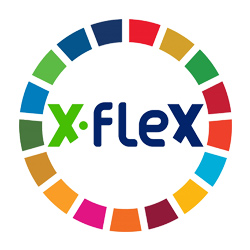SPECIAL SESSIONS
Special Session:
Implementation of models and innovative solutions in the operation of smart distribution networks
Implementation of models and innovative solutions in the operation of smart distribution networks
Organizer:
Tomislav Capuder, University of Zagreb Faculty of electrical engineering and computing
Short description:
Traditional power systems were characterized by passive end-users, oriented mostly on power delivery. Also, power system operators planned the generation of large power plants so that it matches electricity demand. In recent years, the paradigm of planning and operation of power systems, and especially distribution systems have significantly changed.
The green energy transition and different climate packages emphasize the need for the reduction of greenhouse gas emissions and in general, the negative impact of power systems on the environment. In order to do so, the integration of renewable energy sources and other low carbon (LC) units becomes a vital part of the planning and operation of distribution networks. A recent increase in electricity prices and other energy sources, e.g., gas and oil, often used in heating and transport, combined with the decrease in prices of LC technologies, caused by technological development, encourages end-users to invest in photovoltaics (PVs), heat pumps, electric vehicles (EVs) and other LC units. Therefore, the share LC units in distribution networks, i.e., distributed energy resources, continuously grows.
Despite their positive environmental and financial impact, they create numerous technical issues for Distribution System Operators. Increased PV production leads to overvoltage and reverse power flows, while uncontrollable charging of EVs can cause network congestions and undervoltage problems. Integration of LC units is also related to different power quality problems. Since most of them are power electronics-interfaced to a network, combined with non-linear loads in a network, they increase the harmonic pollution in distribution networks. Even though end-users can be single-phase, or three-phase connected to a network, most of their devices are single-phase connected. Additionally, based on their maximum power, LC units can be single-phase connected. Single-phase connection only contributes to the increase of voltage and current unbalance. Deterioration of power quality leads to increased technical, and consequentially financial losses, a decrease in the equipment’s performance and their expected lifetime.
To enable further integration of LC units and to ease the operation of smart distribution networks, DSOs require specialized tools that will enable the assessment of LC units’ impact but also propose solutions that will help in resolving technical challenges. Recently, these solutions become more oriented toward the exploitation of the end-users potential. Distribution and especially low voltage (LV) networks are often characterized by low observability. Network topology and other data required for the analyses and simulations are often unknown, which only hinders the assessment and operation processes. Recently, the number of smart meters and related communication infrastructure installed in distribution networks has grown and
has increased the observability of distribution networks. A high share of smart meters is a prerequisite for the total transition towards smart, active distribution networks. Also, it is needed for the exploitation of the end-users flexibility in the mitigation of different voltage and current issues.
The databases with the network data are often large and they contain a lot of data that cannot be used in the initial form. Before using this data in any of the analyses, it requires preprocessing and editing, so all the errors and unnecessary information are removed. Network topology and other network data are analyzed and edited using tools based on Geographic Information Systems (GIS). Since the network data besides the technical attribute often contains geographical, locational attributes, GIS-based tools are suitable for running the topological queries and other geospatial operations needed for editing the network data, which then can be used in power flow, harmonic, and other relevant analyses. The data valid for the end-users, e.g., consumption or voltages, often cannot be used in the primary form due to outliers or missing values. Also, this data is large and complex and requires the use of tools that are suitable to work with such datasets. Recently, machine learning (ML) algorithms have been widely used in the operation of smart distribution networks. These algorithms show great capability in working with large and complex datasets but require precise data. The data without any missing or outlier values and other potential errors are ensured by analysis made in the preprocessing. Despite the increased number of installed smart meters, their full potential remains unexploited since they are used only for collecting the basic billing and processing data such as end-users active consumption and phase voltages. Since the analyses require more detailed data, ML-based algorithms are used for different purposes, e.g., distribution of the consumption among the phases. ML algorithms can be used in forecasting the consumption of end-users and a load of substations, forecasting network losses, or the RESs production.
End-users are becoming the central figure in the green energy transition. Their flexibility potential is more often used in enabling the integration of LC units and the mitigation of technical challenges in the operation of smart distribution networks. The operation of smart distribution networks also requires the development of the tools and implementation of the advanced models that will help in all necessary analyses and in solving voltage, current, power quality, and other problems related to the integration of LC units. ML, optimization, and algorithms based on the other systems such as GIS are widely used in the aspect of the network’s operation and their functionalities are used to overcome all data-related issues and consequentially to exploit the potential of end-users and maximize the DER’s hosting capacity.
The special session will feature a series of presentations as follows:
1. Tomislav Capuder, UNIZGFER: “Introduction to the smart distribution networks project” (duration: 10 minutes)
2. Kristina Mileta, HELB: “Smart devices in smart networks: Metering in Croatian LV networks” (duration: 20 minutes)
3. Tomislav Antić and Terezija Matijašević: “Modelling challenges in LV networks” (duration: 40 minutes)
4. Danijel Dobutović, HEP-ODS and Sven Breyer, HELB: “Loss analysis in the pilot location Vinkovci” (duration 20 minutes)
5. TBD, 7IT: “DINGO – a simple visualization of complex data” (duration 20 minutes)
6. Goran Jurišić and Tomislav Capuder: Closing remarks and new ideas for the future (duration 10 minutes)
Special Session: X-FLEX
Organizers:
Bojan Stojanovič, Mislav Kirac, Edin Lakić, Tomi Medved
Short description:
The increasing share of Distributed Renewable Energy Sources (DRES) in the energy grid has become key for the decarbonization of the European electricity system and thus for the achievement of the EU energy and climate change policy goals. The variability and uncertainty of these distributed sources pose important risks and challenges to the stability and security of the European, national and local grids, but at the same time they open new opportunities for energy actors. This overall picture is completed by an emerging decentralized ecosystem where new energy systems, such as batteries, power to heat/cold, vehicle to grid and other storage solutions, are offering a large flexibility potential to the grid.
X-FLEX project
X-FLEX is an EU-funded Horizon 2020 project that started in 2019 and will run until the end of 2023. The aim of the X-FLEX project is to design, develop and demonstrate a set of tools to integrate the emerging DRES and flexibility systems into the existing European energy system, in an efficient and cost-effective manner, to create more stable, secure and sustainable smart grid, with attention also to extreme weather conditions. The project addresses different actors of the smart grid value chain, from the TSO to the final end users, including microgrid operators and utilities, considering flexibility in both on the generation and on the demand side, on an individual or aggregated level.
X-FLEX project proposes, a set of efficient, cost-effective, integrated solutions, that will facilitate the optimum combination of decentralised flexibility assets, both on the generation (DER) side and on the demand side (power-to-heat/cold/gas, batteries, demand response), enabling all parties to offer their flexibility in the market creating benefits to all the energy actors. X-FLEX is unique in its multi-technology and multi-actor approach which, in an increasingly RES-powered grid, will ensure security, resilience and stability for all, even under grid-stressing scenarios such as extreme climate events.
Four complementary products are developed in XFLEX. They offer services to all the energy stakeholders, from network operators (TSO/DSO, microgrid operators) to final consumers/prosumers and flexibility providers, including other intermediate players, such as retailers and aggregators.


• SERVIFLEX tool (Integrated flexibility management tool): It is the tool for flexibility managers to take advantage of the value of energy storage along with other demand flexibility resources towards the establishment of a holistic framework for flexibility extraction, profiling, forecasting, classification, clustering and management to serve different market and grid needs.
• GRIDFLEX tool (Advanced tool for automatic control and observability): It is the tool for distribution grid and microgrid operators in order to prevent congestion and power quality problems with the increasing share of intermittent RES, giving special attention to the potential grid problems due to extreme climate events.
• MARKETFLEX tool (Market platform and new market mechanisms): It is the tool for flexibility owners to access the market through an aggregator or through a Balancing Responsible Party (BSP) to participate on different markets: the existing wholesale markets and balancing markets, but also local electricity markets and local flexibility markets for DSO.
• X-FLEX platform (Flexible and scalable integrated platform): The X-FLEX platform integrates all the X-FLEX solutions in order to provide services for all the energy actors and ensure more secure, stable and clean energy supply.
The expected results of the X-FLEX project include socio-economic benefits by the creation of jobs related to distributed flexibility technologies after the commercialization, deployment and implementation of the X-FLEX solutions. Environmentally, X-FLEX predicts the increase of RES production by shifting the demand toward high-generation periods thus avoiding curtailment of DRES. Besides, this project aims at a market transformation at the distribution level and a large-scale deployment of local markets.
In the panel, Mislav Kirac from Zelena Energetska Zadruga (ZEZ) will present REDREAM project, one of the “sister projects” on topic of flexibility and results from the Croatian pilot site.
